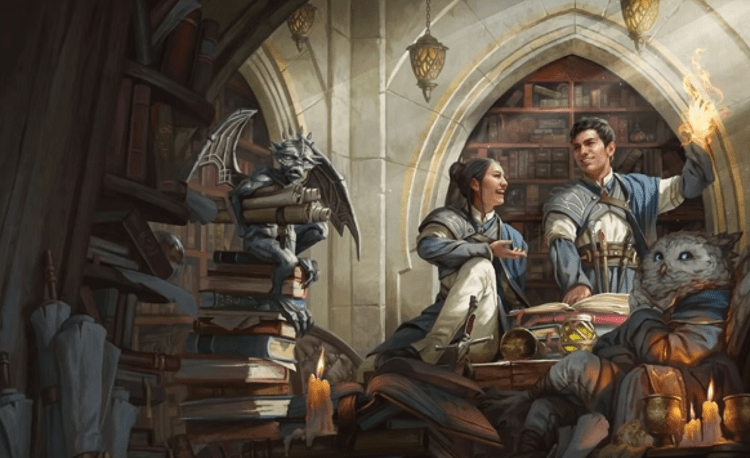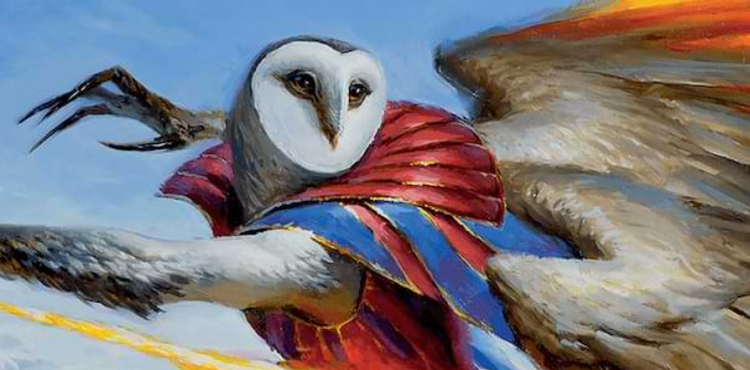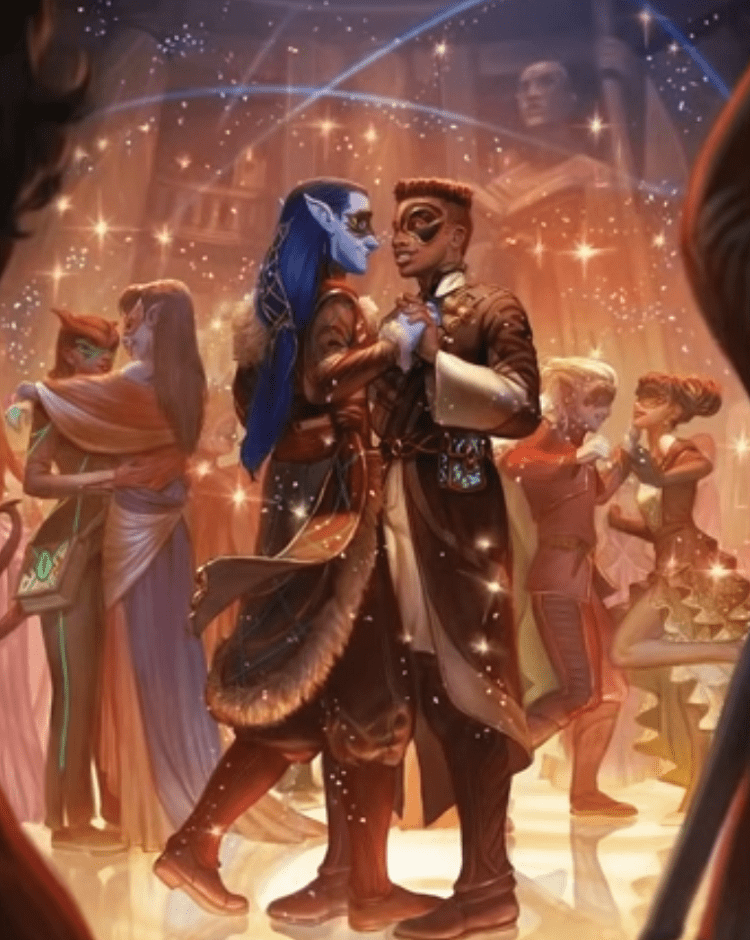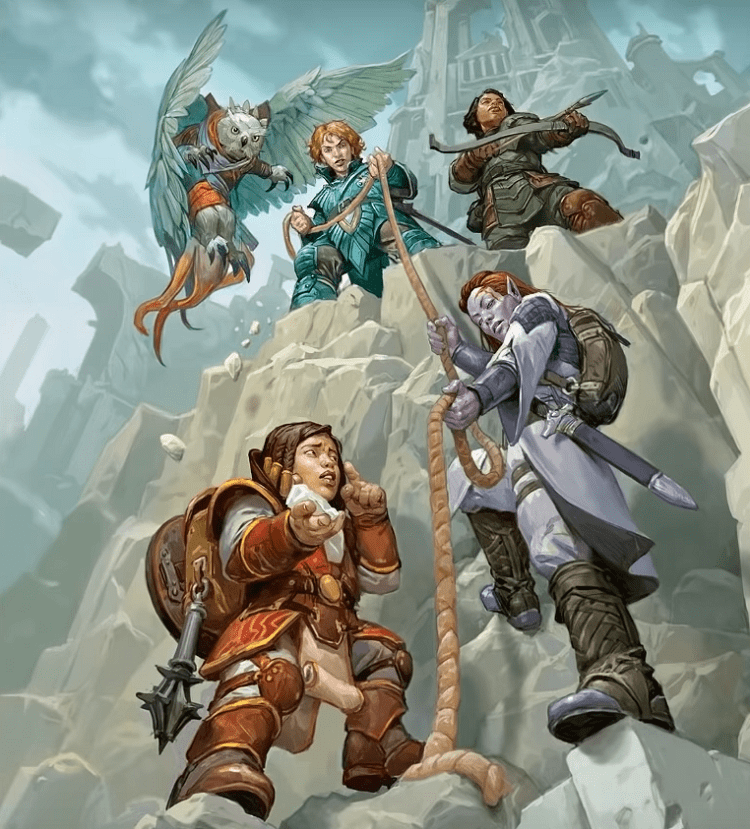An Owl 5e guide is something I looked up whenever I got to choose a familiar. However, what I didn’t know at the time is that an owl is much more than just a familiar I thought about choosing – just so I could name it Hedwig.
An Owl is also a relatively new D&D player race and a fantastic homebrew monster that I would love to add to a D&D campaign. Of course, the familiar is the most popular type of owl, but it’s so much more.
There’s a reason that the owl familiar is the most popular familiar in the game. But what I want to talk about is that the term “owl” doesn’t always describe the familiar alone but other D&D treasures.
Owl 5e – The Need to Know
| Creature | Ability Scores | AC | HP | Speed | Skills | Passives | Actions |
| Owl – Familiar/Tiny Beast | STR – 3 (-4) DEX – 13 (+1) CON – 8 (-1) INT – 2 (-4) WIS – 12 (+1) CHA – 7 (-2) |
11 | 1 (1d4-1) | 5 ft., fly 60 ft. | Perception +3, Stealth +3 | Fly By, Keen Hearing/Sight | Talons |
| Owlin (Race) | Two ability scores increase by 2 and one by 1 | NA | NA | 30ft | NA | Flight, Silent Feathers | NA |
| Dire Owl | STR – 16 (+3) DEX – 16 (+3) CON – 14 (+2)INT – 8 (-1) WIS – 13 (+1) CHA – 6 (-2) |
15 | 66 (8d10 +16) | 15ft land, 60ft flying | Athletics +6, Perception +7, Stealth +6 | Fly By, Keen Hearing/Sight, Ambush Predator | Multi-Attack, Beak, Talon |
I cover three types of owls in this guide – each is outlined above with the most essential information about them. The owl familiar is an option for those with Find Familiar.
The Owlin is a player race introduced in Strixhaven. Finally, the Dire Owl is a player-made homebrew monster that is too cool not to share. I love homebrews and am always excited to find something that impresses me.
When someone does say “owl” in Dungeons & Dragons, they likely mean the familiar. But they could also mean one of the other options I mentioned or a wild owl – the simple animal.
The Owl 5e Familiar

- AC – 11
- HP – 1 (1d4-1)
- Speed – 5ft walking, 60ft flying
- Size – Tiny beast
- Skills – Perception +3, Stealth +3
- Senses – Darkvision 120 Ft., passive Perception 13
The owl familiar is a popular choice. While DMs can use the stats for a wild owl, it is primarily used for owls that players either tame or as the familiar. It is one of my favorites as well, so I understand its popularity.
The owl familiar specializes in Wisdom and Dexterity related checks. It is physically weak and unintelligent, but I find that these are traits that I don’t need in a familiar anyway.
Flyby
Flyby is an ability that gives the owl a passive that makes it where it doesn’t provoke opportunity attacks when it flies away from an enemy. Without this ability, the owl would die in one hit if anything succeeded in hitting it.
Keen Hearing and Sight
Keen Hearing and Keen Sight gives the owl advantage on Perception checks that rely on hearing or sight. So whenever it makes a Perception check, it can roll twice and use the higher number.
Talons
Talons is the only attack that an owl has. It is a melee weapon attack that does +3 to hit, has a reach of 5ft, and can only attack one target at a time. When it does hit, it does 1 Slashing Damage.
The Dire Owl 5e Beast

- AC – 15
- HP – 66 (8d10 +16)
- Speed – 15ft walking, 60ft flying
- Size – Large beast
- Skills – Athletics +6, Perception +7, Stealth +6
- Senses – Darkvision 120 Ft., passive Perception 14
The Dire Owl is a beast in D&D 5e who is similar to the Giant Owl. The Giant Owl is more of a neutral beast that often befriends elves and other Sylvan creatures. Though the Giant Owl has better stats than the owl, it is otherwise the same creature.
The Dire Owl, however, is a unique homebrew creature that is a darker variant of the Giant Owl. It has Flyby and Keen Hearing/Sight like the owl, but it also has these unique abilities.
Ambush Predator
Ambush Predator gives the Dire Owl advantage on attacks against creatures that haven’t taken a turn in combat yet. So if it is attacking a creature that hasn’t attacked, it can roll twice and use the higher number.
Multi-Attack
With Multi-Attack, Dire Owls can make two melee attacks whether with two talons or with their beak and their talon. The attacks must be Beak and Talon – which you can find below.
Beak
Beak is a melee weapon attack that does +6 to hit and reaches 5ft. It does either 13 or 1d10 +3 slashing damage. Beak is the stronger move of the two moves if you only prioritize damage.
Talon
Talon is another melee weapon attack that does +6 to hit and reaches 5ft. It does 11 or 2d8 +3 piercing damage and grapples the target (DC14). While grappled, the target can’t have Talon used against it again.
Owl Player Race – The Owlin

- Ability Score Increase – One by 2 and one by 1
- Languages – Common and one other of your choice (DM must approve)
- Size – Small or Medium (you choose)
- Speed – 30ft
- Extras – Darkvision, Flight, Silent Feathers
Before Strixhaven: A Curriculum of Chaos was released in the DnD world, players could only be an owl race via a homebrew. But now, if playing with this edition, you can play as the owl race known as the Owlin.
Owlins are Humanoids, but they also are cousins to the fey. You can make your Owlin look any way that you want as long as it has owl features. Some are fluffy, while others are sleek.
I suggest using a real-life owl to base yours on. The Owlin has arms and legs like humans but also has wings on its back. When they fly, it is silent, so they are one of the sneakiest races.
The Owlin has proficient in Stealth and flies at the same speed that it walks. You can only fly if you’re wearing light armor – or no armor.
What Does a Familiar Do in 5e?
A familiar is a companion and utility creature that players can sometimes acquire. The familiar isn’t an animal, but a creature that you can summon to do actions for you. You can use an action to dismiss the familiar.
When you dismiss it, it is sent to its own dimension so that you can easily summon it again for as long as the ritual lasts. To summon it initially, you must cast the ritual which will take an hour and ten minutes.
You can summon it again to any space within 30ft of you. Though be careful if you summon it during combat because familiars cannot attack. But if you keep them within 100ft of you, they will obey you.
As for what actions it can do, the familiar can take any action that its body is capable of doing. While it can’t carry a body, it can use the Help action, the Use an Object action, or anything else that it could physically do.
How to Get a Familiar in D&D 5e

There are a few ways that players can obtain a familiar. The obvious choice is to start out as a Wizard. The Find Familiar spell is on the Wizard’s spell list. You can cast it at 1st level. As for everyone else, you have to get creative.
Pact of the Chain – Warlock
At 3rd level, the Warlock can pick a gift bestowed upon them by their Patron. The Pact of the Chain is one Boon that you can choose. It allows you to cast Find Familiar as a ritual.
There are also unique forms that the familiar can take. On top of that, the Warlock’s familiar can attack while other familiars cannot. However, you must forgo your attack for this to happen.
Eldritch Knight – Fighter
Eldritch Knight is an archetype that allows the Fighter to cast spells. You get to choose 1st level Wizard spells, which includes Find Familiar. This is a straightforward path, and the spell is exactly the same as the Wizard’s version.
Arcane Trickster – Rogue
As a Rogue main, I’ve taken Arcane Trickster on more than one occasion. Just like the Eldritch Knight path, the Arcane Trickster path gives you access to the Wizard spell list – among other things.
Alternative – Any
If you pick up the Ritual Caster or the Magic Initiate feat, then you can use Find Familiar. This can be done by any class – even a Barbarian – so it’s an easy way to get Find Familiar regardless of your situation.
How to Roleplay with an Owl in 5e

The roleplay side of DnD is my favorite part. If you want to roleplay with an owl – whether it be with a familiar or the Owlin race – you can take owl lore into account to make things easier.
You can start by looking at owls in fiction. The owl from the Secret of NIHM, Owl from Winnie the Pooh, and Archimedes are great examples of well-written owls to inspire you. If you want to get even more creative, use these examples.
Wisdom
This isn’t just about the Wisdom skill checks but the actual wisdom that owls are known to have. Their power to use intuition and their experiences to be the go-to being for advice can come in handy.
Athena – the Greek goddess – is often depicted as an owl, or rather an owl is often used as a symbol to represent her. As the goddess of wisdom and strategy, the owl makes a wonderful battle general.
The Un-Avenged
In Arabian folklore, the owl represents the soul of someone who was un-avenged. They are actually a bad omen that won’t disappear until the person they present is avenged.
This route could be perfect for you to use for your roleplay needs. The owl will continue to hoot over and over again until their business is taken care of and the un-avenged become avenged.
General Witchcraft
There are countless cultures that associate owls with witchcraft. In West Africa, they are messengers of witches. In Madagascar, they dance on the graves of the dead with witches.
In Persia, wizards used a bewitched man’s nails to kill owls. The list goes on and on regarding the associaton with owls and witches/wizards. So use this real-life magic to create owl magic in your campaign.
Owl 5e Guide: FAQs
Question: What can an Owl Familiar 5e Do?
Answer: An owl familiar can usually use an action. It can’t attack under normal circumstances. It can use standards actions – the DM can use their discretion to let you know if the owl can use the specified action.
Question: Can You Ride a Giant Owl in DnD?
Answer: Riding a Giant Owl could be possible if you could get the owl to let you. Since they are fond of fey creatures, it’s more likely an Elf could get them to than a Human – or another non-fey.
Question: Can I be an Owl in D&D?
Answer: You can be an owl if the campaign allows Strixhaven races. The MTG crossover D&D book features the Owlin as one of the player races – which is a humanoid that also looks like an owl.
Question: What can an Owl 5e Carry?
Answer: If you are playing with player rules, the owl can carry 45lbs. However, the DM may decide there are different rules to go by for familiars. Perhaps something more similar to Mage Hand or Unseen Servant.
Question: Are Owls Good in 5e?
Answer: Owl familiars are good. While what a familiar can do is limited, I believe that a flying familiar is more useful than one that is bound by the land. Owls and hawks are both wonderful options.
The Power of the Owl 5e
The owl is the most popular familiar in Dungeons and Dragons. My favorite familiar will always be the hawk, but the owl is a close second. The owl is dextrous and wise, making it great at a few things.
The Dexterity checks include Acrobatics, Sleight of Hand, and Stealth. Wisdom checks include Animal Handling, Insight, Medicine, Perception, and Survival. Even without creativity, the owl is good at these.
But if you get creative, the DM may award you by allowing you to attempt unique checks with the owl. So get your roleplay on and take your game to the next level with an owl familiar.
- Augury 5e Guide – The Vaguest and Coolest Cleric Spell - September 5, 2022
- Roc 5e Guide – The Big, Dumb Bird You Don’t Want To See - September 5, 2022
- Best Drow Name Ideas – From Alvin to Sânziana - August 30, 2022

